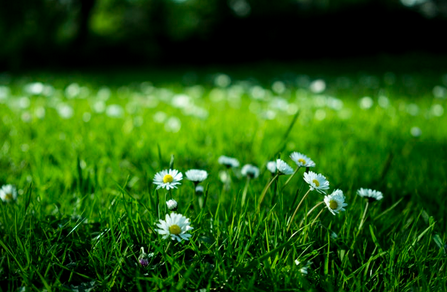There are two reasons why it’s important that water-saving measures be implemented in your garden. The first has to do with the cost of the regular use of mains water—you pay less when you use less. The second has to do with water demand and distribution—if more people in an area use water that’s most probably sourced from a single location, the source is quickly depleted, and another source will need to be used. The cycle persists, and whole residential areas will experience water shortages.

Here are the best ways to minimise use of water in your garden.
- Be attentive to the soil.
* Add organic matter into your soil to improve its structure. When its structure is improved, it can retain moisture better.
* Mulching flowerbeds, as well as the bases of trees and shrubs during spring, can help prevent the evaporation of moisture when dry spells occur.
* Mulching hanging basket surfaces helps in trapping moisture.
* Add to compost water-retentive gel or granules, or use compost mixed with this type of granules or gel.
- Water only at the correct time.
Garden owners, especially those who own numerous plants, have a tendency of over-watering gardens. Not only is this a wasteful practice, it also consumes more time than necessary. To see if your garden needs water, check the texture of the first six inches of soil. If it’s damp, then it does not need water. However, if it’s dry, then it needs water. If you are using clay, it will feel damp most of the time. On the other hand, sandy soil will feel dry most of the time. In either situation, instead of assessing the soil, watch the plants for signs of water stress, like leaves becoming darker or changing position.
Water deficit during drought can also be prevented by watering your garden before the drought does set in. Plants may also be watered during the early hours of the evening, as the cold air temperature during those times prevents the poured water from evaporating.
- Use the appropriate amount of water.
This actually depends on the type of soil you have. Sandy soils need more watering compared to heavier soils. Clay-based soils do not need to be watered often, but will require more water. The rule of thumb for watering is: 24 litres for every square metre every ten days.
- Plant flowers which do not require a lot of water.
There are plants that do not require a lot of water to grow. Palms, lavender, verbena, and mimosa are just some examples.
- Choose an appropriate watering technique.
While sprinklers are generally considered an efficient watering method, they require too much water. Other, more viable options include watering cans (and hoses), seep hoses, as well as automated irrigation systems. The use of watering cans and hoses may require a lot of effort on your part, but they are precise. Seep hoses you can bury under mulch or soil, thus preventing the water that seeps out of them from evaporating right away. Automatic irrigation systems can be programmed to release a certain amount of water during a certain time.
- Collect and use rainwater.
The collection of rainwater for garden use does not require much on your end. You only need a well-built system fashioned from top-quality materials. Pay particular attention to the filters and water tanks NSW that you purchase.



Leave A Comment